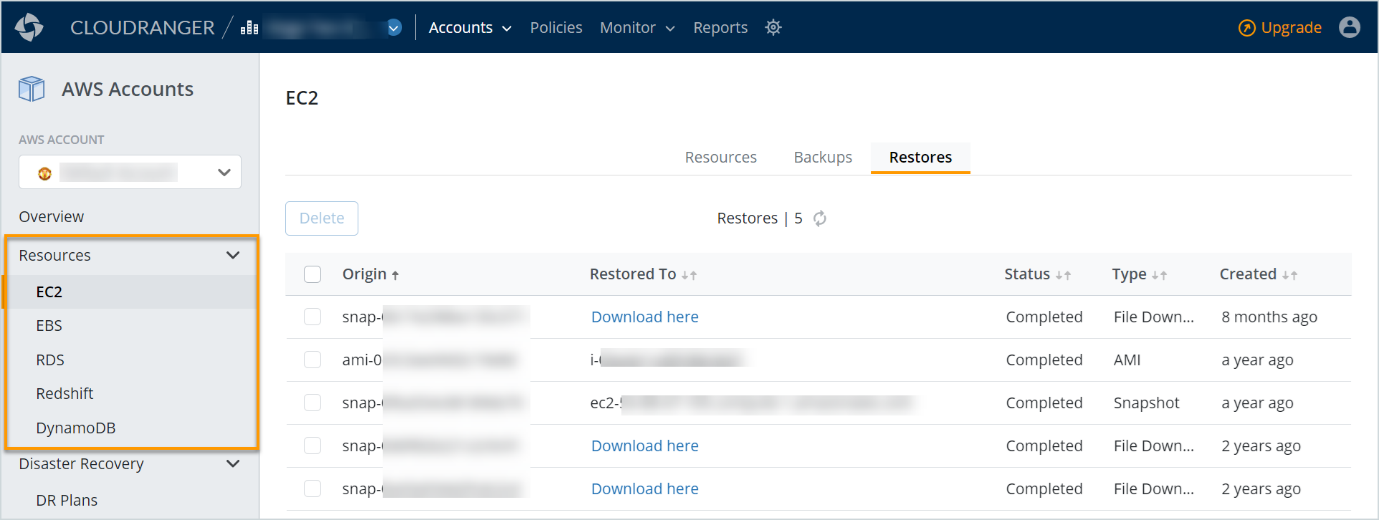About Restoring your AWS Data
Druva CloudRanger offers multiple approaches to restoring your AWS backups. In general, the restore process depends on the backup type applied to the specific resource, that is, AMIs or snapshots.
The restore process also varies based on the resource type that has been backed-up. For example, you may choose to restore an EC2 instance from AMIs or snapshots. On the other hand, RDS snapshots are restored as an RDS instance.
To access your backup restores, navigate to Resources, select the appropriate AWS resource category, and then click Restores.

The Restores page displays all previous backup restores, including the backup Origin and Restored To locations, the restore Status, Type, and the timeframe when the restore was Created.
The following section describes the resource-specific restore process in Druva CloudRanger.
Restoring EC2 Instances
Restoring an AMI
An Amazon Machine Image (AMI) is a template that contains a software configuration (for example, an operating system, an application server, and applications). From an AMI, you launch an instance, which is a copy of the AMI running as a virtual server in the cloud. For example, an AMI is an image of your EC2 instance.
Druva CloudRanger offers a simple restore process for AMIs. You can initiate a Restore of an AMI, and specify the Availability Zone, the Instance type, and tags associated with the new instance. You will also need to specify the encryption keys to restore encrypted backups.
Restoring Snapshots
Snapshots are incremental backups, which means that only the data blocks that have changed since your most recent snapshot will be backed-up. Upon restoring a snapshot, the entire point in time copy is restored. When you delete a snapshot, only the data exclusive to that snapshot is eliminated.
You can choose one of the following approaches to restore an EBS snapshot:
- Restore as a volume: You can restore the snapshot to a volume, in an Availability Zone of your choice.
- Restore as an instance: EBS snapshots can also be restored as an instance. To do this, Druva CloudRanger boots up an EC2 instance using predefined parameters, and then attaches the snapshots to be restored as a volume to that instance.
- File-level restore: With the file-level recovery option, you can initiate a recovery instance and choose the files you want to recover. This process launches an instance within your environment, attaches the volume, and then hosts it as a web server. Files restored on this instance will only be accessible through your IP.
Restoring RDS DB Snapshots
RDS database snapshots on Druva CloudRanger are restored as an instance: Restoring an RDS snapshot launches a database instance from the selected snapshot. You can also specify the VPCs, subnets, and security groups.
Restoring DynamoDB Tables
Amazon DynamoDB backups as restored as DynamoDB tables. Druva CloudRanger supports cross-region restore as well as restores within the same AWS Region. You will need to specify the KMS encryption keys to restore encrypted source tables.![]()
Note: Druva CloudRanger does not currently support restore of RedShift clusters. You can choose to restore RedShift clusters from a snapshot via the AWS console. For more information, please refer to the AWS documentation.

